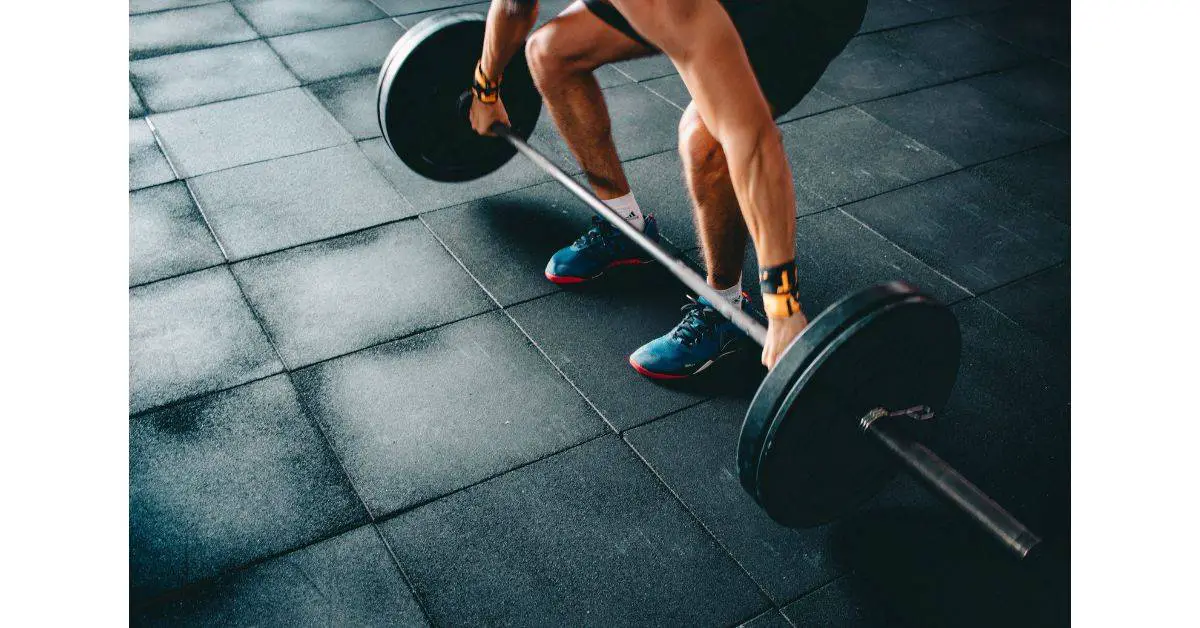Strength and conditioning have made their way into numerous sports, and boxing has also come to understand the potential advantages of a carefully crafted weightlifting regimen. So, should boxers lift weights?
Boxers should lift weights, but not like conventional bodybuilders. Weightlifting training designed explicitly for fighters is highly beneficial to them. Lifting weights enables boxers to lose weight, enhance their ring performance and gain muscle mass; thus, increasing their punching power.
It increases their punching force and power production while increasing their resistance to injury.
Most elite boxers benefit from a well-rounded weightlifting program, and as fighters have grown to recognize these advantages. The tradition of lifting weights and boxing has gradually progressed toward acceptance. Possessing more muscular legs and the capacity to exert larger rotational forces facilitate the transmission of punching power.
Before we dive in, if you want to buy the best boxing shoes for your money, and thus, improve your abilities almost immediately, follow the link to an article of mine on the topic.
How often should boxers lift weights?
In the event of acceptance of weightlifting for boxers, how frequently should fighters lift weights to get the best results?
Weight training should be done by a boxer two to three times a week. Sparring and pad work, essential components of sport-specific training, will be compromised by more than three weekly sessions. The optimal time to conduct weight training is after boxing-specific training, never before sparring.

The ideal frequency is usually twice per week, providing enough stimulation to advance while minimizing the weariness you bring to boxing training. A boxer should discontinue their weight-training regimen for a minimum of one week before a competition.
Although lifting modest weights can enhance your aerobic capacity, it will not do anything to boost your speed or explosive power. The boxer must lift anything between medium and heavy weights and move quickly and violently.
Lifting weights to aid certain boxing motions, such as delivering a solid right hand, would be more potent. However, the extent that a boxer has practiced their boxing style will ultimately determine this. For instance, a landmine push utilizes numerous of the same muscles as striking, but the approach is what makes this possible.
Lifting weights should sometimes be seen as little more than strength and conditioning by a boxer. A boxer will gain muscle and develop to be stronger, but it will not necessarily become more powerful or quicker. Therefore, to maintain their speed and power, boxers must lift weights to a certain amount.
Is boxing and lifting weights dangerous?
When done correctly, weightlifting may be a beneficial supplement to a boxer’s regimen, but when done wrong can be detrimental to the boxer.
One of the main drawbacks of boxing and lifting weights is that it can increase the likelihood that the boxer will overtrain. Worse, it may even contribute to or result in a severe injury. Boxers that start weightlifting too quickly or too hard frequently exhibit this. But, overall, they’re not dangerous nor harmful activities.
Lifting weights is a tremendously taxing activity on the body, especially if the learner has no prior knowledge.
Overtraining is the phenomenon of performing more intensive training than the body can recover from within a certain amount of time. Boxers need to use caution when using this term since it alludes to pushing your body above its limit. This is because boxing is quite physically demanding.

If a boxer busts a gut every time they go to the gym, it might be a good idea to refrain from weightlifting too intensely.
Exercises that are hard and explosive help athletes perform better by enhancing fast-twitch muscle activation, developing functional strength, together with improving overall fitness. Cross-training in two different sports is a great way to fill up the discrepancies which training for one activity sometimes causes. For instance, boxers frequently use various training techniques to assist their balance, strength and endurance training.
The rough, explosive activity of powerlifting increases strength but might reduce endurance. Depending on the structure of one’s boxing program, the two movements may work well together.
Weightlifting may undoubtedly improve your boxing, but you should use caution while beginning, mainly if you are currently engaged in a strenuous boxing regimen.
What kind of weightlifting should boxers do?
Weight training has become a crucial component of practically all professional sports, as it improves boxers’ speed, strength, and competitiveness in matches.
Boxers should concentrate on the strength training and conditioning of the large muscle groups in their bodies, such as their shoulders and chests, abdominal, glutes, as well as thighs. Traditional resistance workouts, such as bench presses, lunges, deadlifts, and squats will primarily be of benefit to boxers.

Exercises that target several muscle groups at once are best, since they simulate the demands placed on their bodies while boxing.
Boxers should lift weights between 60 and 85% of their maximum during weight training. For instance, if one can bench press 50 kg for 1 set, they should use weights around 30 to 35 kilograms throughout their strength training session. Depending on a boxer’s particular goals, repetition ranges ought to change.
Boxers use mid-range reps (with moderate weights) to train speed and strength, whereas lower reps (4 to 6) with larger loads may improve power/max strength. When the objective is the conditioning of the entire body, boxers can integrate more repetitions with specific full-body motions like snatches or dumbbell swings.
Keep in mind to move the loads explosively when lifting them. Boxers need to train correctly to enhance their speed and power. To be swift, train quickly. Strength training objectives for a bodybuilder and a boxer are very dissimilar. A fighter exercises for performance while being conscious of his size, while boxers need to get stronger while staying within the parameters of their weight class.
If you want to perfect your boxing technique, follow the link to learn a step-by-step guide on how you can do so.
Real examples of boxers who lift weights
Seeing real examples of professional, elite boxers who lift weights—may help you in starting your own journey. So, here are some examples of boxing personnel you may know who constantly lift weights.
#1. Anthony Joshua
Weight lifting is nothing new to AJ because he lifts many weights. Thus, explaining why he is so toned. Joshua performs medicine ball exercises, deadlifts, as well as bench presses.
#2. Miguel Cotto
Cotto is a multiple-time world champion from Puerto Rico who has experience in weightlifting. This Puerto Rican athlete, who is now retired, has been seen performing medicine ball exercises, weighted core exercises, axe chops, as well as military presses. However, Miguel seemed to detest performing conventional weightlifting. Miguel never performs exercises like tricep push downs or bench presses.
#3. Adrian Broner
Traditional lifts are a well-known part of Broner’s training regimen. He performs shoulder presses, bicep curls, and bench presses. Nevertheless, it is hard to figure Broner out. Perhaps he is simply trying to seem better rather than giving himself a real advantage in the ring.
#4. Tyson Fury
Weightlifting is a popular addition to the Gypsy King’s training regimen. The Gypsy King performs common exercises, including shoulder presses, deadlifts, and bench-presses. Such weight-training exercises do not appear to hold him down at all. Tyson is, after all, remarkably quick for a heavyweight, perhaps because of the weight training exercises he performs.
Final words
Weight training is among the most efficient methods in boxing for boosting general strength and explosive power.
A boxer should incorporate weight lifting in their training twice or thrice a week. They should focus on strength and conditioning exercises in their weightlifting regime—high-profile fighters above practice weightlifting, which has helped them be fierce in the ring.
Add weightlifting to your training program and watch your strength along with endurance increase tremendously.
If you enjoyed reading this article, you’ll also enjoy reading about the best boxing clothing you should buy to ensure you’re comfortable and flexible in training, sparring, and while competing.
